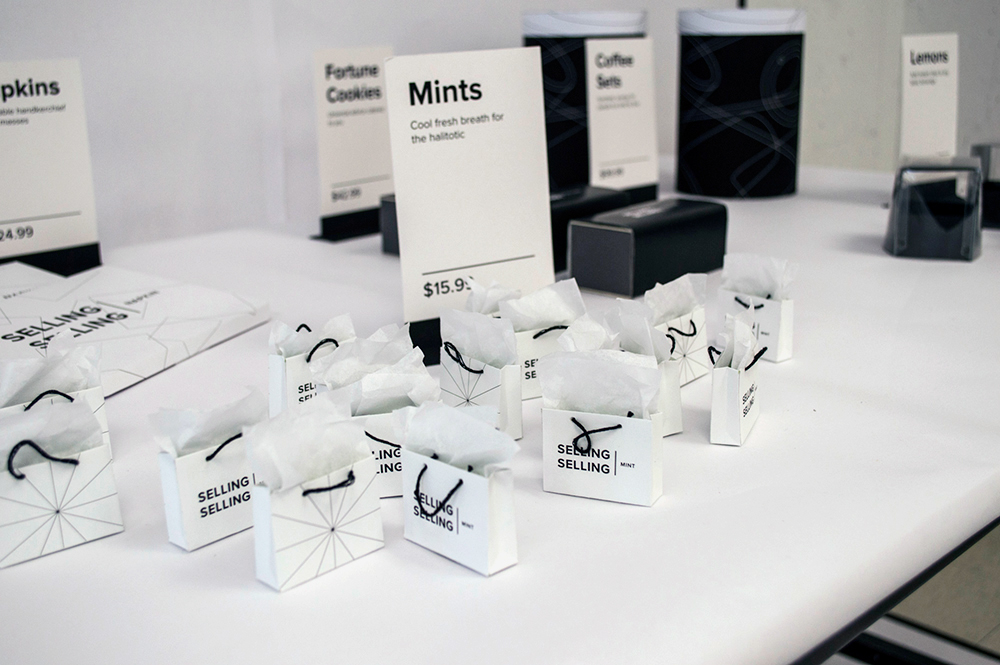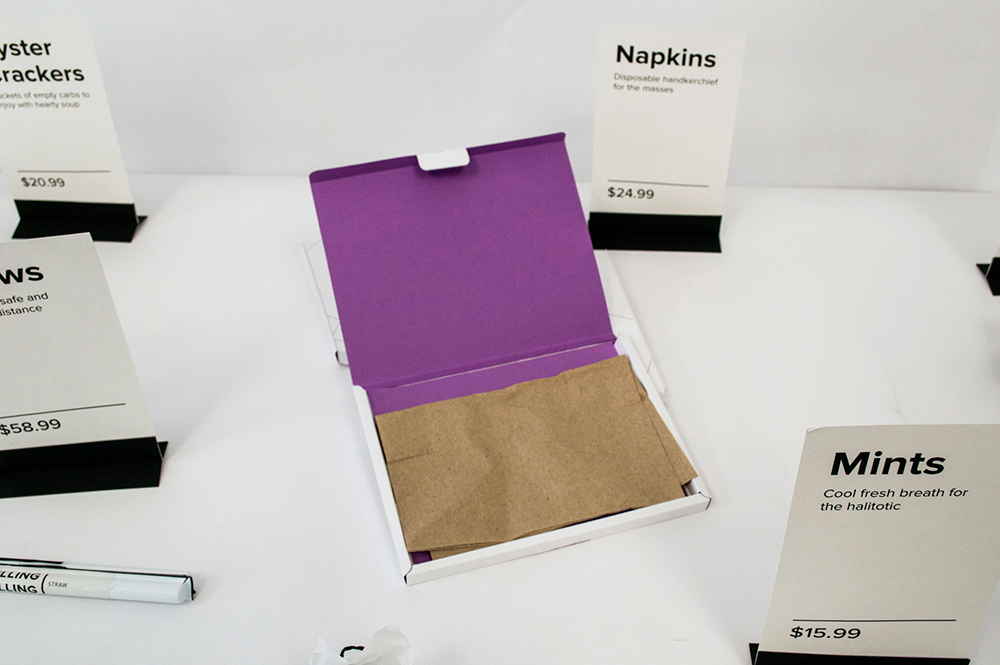Selling Selling
A manifesto responding to the historical trend among design manifestos to proclaim lofty goals and outright reject commerciality. Conceived and executed with two other Graphic Design students (Janice Park and Kiely Berg), we disagreed with such a black and white outlook.
We instead wanted to delve into a more nuanced, realistic investigation of a designer's place in a commerce-driven world. Design is by nature commercial, and as designers, we facilitate the exchange, or selling, of ideas, whatever form they may take.
Full manifesto: http://tinyurl.com/sellingselling



Part 1: Publication
A central tenet of our manifesto is the idea that design is the packaging ideas, so to publish it, we decided to translate our manifesto into a literal branded good. Rather than a tangible product, the contents are merely trappings associated with buying and selling: tags, care instruction booklets, coupon cards, and receipts. Each "item" contains text about a different topic addressed in the Selling Selling.





Part 2: Expansion
The SELLING SELLING | POP UP SHOP is an extension of our initial packaged idea that engages visitors in a dialogue about the role of design. By repackaging and de-contextualizing throwaway items like plastic utensils or paper cups, we call into question whether it is the experience of the shop, the aesthetics of the packaging, the ideals of our brand, or the products themselves that are being sold, hence the exorbitant prices.




All of the packaged items are related to food and food consumption as a play on the idea of commercial consumption. They are also all freely obtainable from our school's dining halls.







Part 3: Circulation
Leading up to the installation of the popup shop, we circulated a series of posters challenging viewers' ideas about value and design. These were placed separately around campus and also uploaded to the Selling Selling instagram, @sellingselling_shop.








